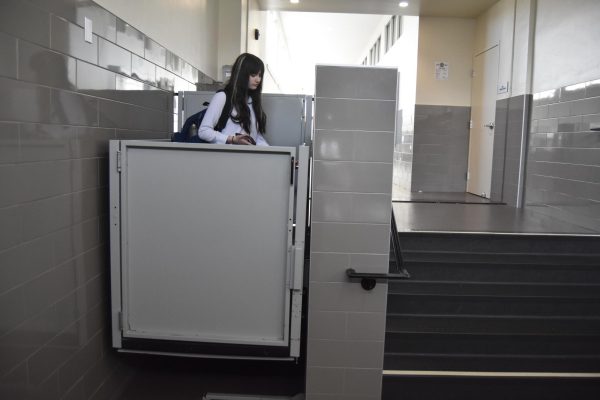Riordan institutes new grading system
Math teacher Mary Ann Datoc helps Ian Slattery ’22 with his work.
October 22, 2019
Archbishop Riordan High School has always embodied a traditional grading system, up until this school year.
Transitioning into a skills-based grading system signifies anew approach the administration is taking: rather than including homework as a considerable part in students’ grades, homework is only considered “practice” in this new grading system.
As a result, students’ grades are primarily based on assessments and final exams.
According to Michael O’Brien, Dean of Academics, the administration “hope[s] to achieve an accurate measure of student learning based upon departmental criteria schoolwide.”
Standards are, according to O’Brien, “a set of criteria and skills that a student needs to be able to master in order to do well in the class…”
Standards may vary by academic department but are consistent within each department. Every class assignment is linked to one or more standards, depending on the department and the teacher. The transition is challenging to comprehend, but teachers have a more difficult task: they are the ones who have to input grades.
The teachers have received several training sessions, teaching them how to adopt this new grading system.
“This has been a five-year process in developing this system,” said O’Brien. “Teachers have received professional development, in house and off-campus, in seminars and other related areas.”
In effect, all teachers are equipped with the necessary tools to be able to input grades into PowerSchoolPro successfully.
Of course, training is still ongoing. Teachers are inevitably going to run into obstacles while inputting grades. However, teachers now have to work on implementing departmental standards in the classroom, whether that be in the form of lesson plans, lectures, etc.
“Our next step,” said O’Brien,“is to give them professional support for instruction in the classroom.”
English instructor Diana Assereto encourages students and teachers to use this system to their advantage: “If students seriously look at standards, students can greatly benefit from knowing what specific skills they need to improve on.”
However, Assereto stated that the grading standards are “only as good as the way they’re utilized.”She added, “If students read my feedback, I would be so excited.”
If teachers input feedback on PowerSchool, but students fail to analyze the feedback, there is no point in the new grading system.
According to Assereto, in order for the new system to work, “We have to change our whole perception of grading.”
Juniors and seniors may be confused by this new system; they have experienced the traditional system for two to three years up to this point.
John Gill ’20 said, “I feel like the new grading system may lead to increased stress among students over getting a good grade on a test.”
John Banzon ’20, on the other hand, feels that “it’s kind of cool how [the administration is] trying to make homework not mandatory.”
Upperclassmen may be worried about their college transcripts because of this change. Rest assured, “the transcripts look no different than they did before,” said O’Brien. “Report cards, though, will look a bit different.”Report cards will not include pluses and minuses. Instead, they will only include a letter grade (A, B, C, D, I) and percentages.
While “F” denotes “failure,” “I” means “in sufficient evidence” in the sense that the student has not shown enough evidence to be given a grade.
Each department has its own
respective retake policy, allowing students to improve their “I” grade. In addition, assignments with “I’s” only go down to fty percent, whereas the traditional “F’s”wentallthewaydowntozero. This change was implemented because the administration does not want students to feel as if they cannot raise their grade.
According to O’Brien, after the first quarter, “The amount of students on probation is roughly the same, but [there are] far fewer students ineligible.”
There are de nitely bene ts and drawbacks to this new grading system. What students can expect, however, is just to continue completing assignments. The grades will come, as long as students put in the work.













